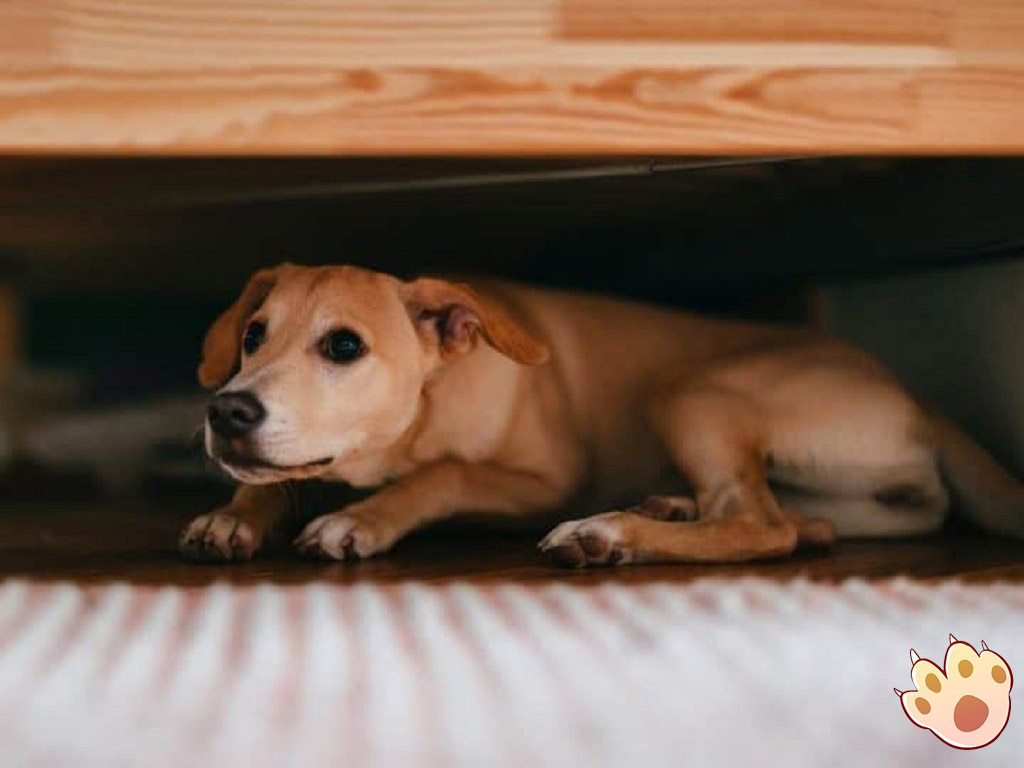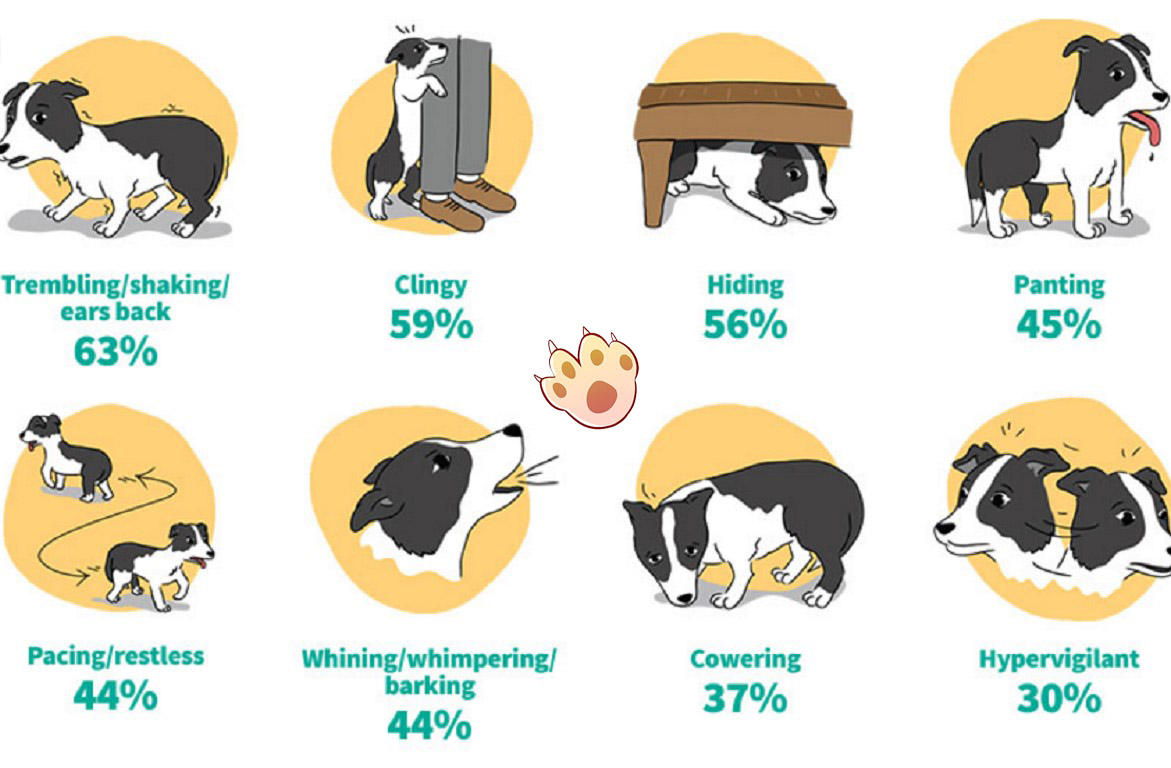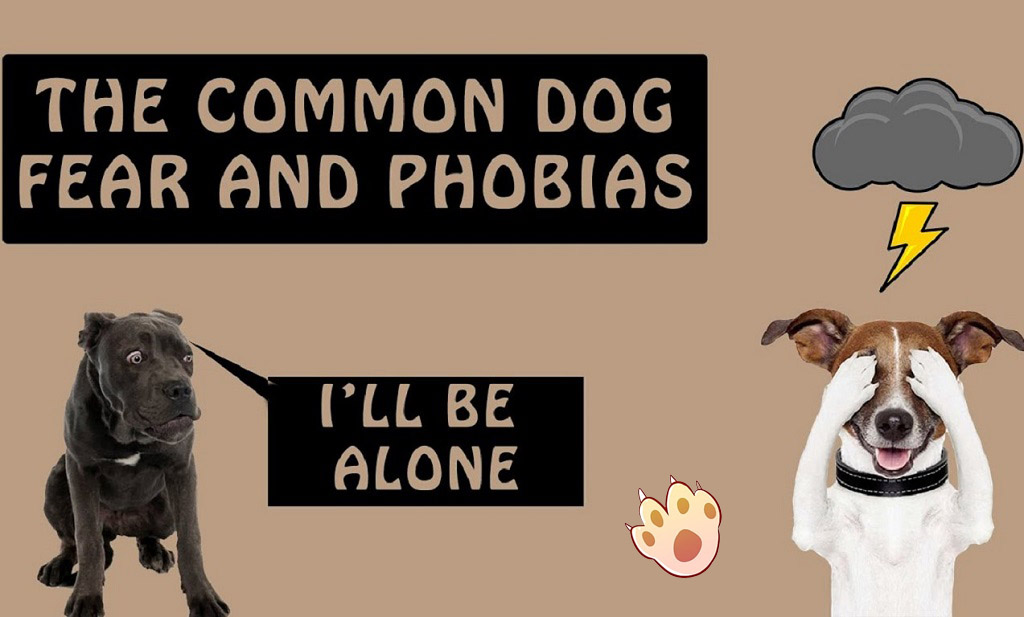
If your puppy seems scared of everything, you will understand that there will be many restrictions living with a timid dog.
Timid dogs usually will not welcome the world with confident step and wagging tails, but avoid any new things, and even much worse, they will preemptively avoid new environment. It’s hard for dog owners to admit that their dogs are scared of everything, because trying to overcome these fears may be overwhelming.
Actually, fear does exist in the wild; it can help dogs far away from danger and increase their chance of survival. But when your dog behaves strangely and fearfully in daily life, both you and your dog will feel stressful, or even cause long-term influence on their health.
In this article, we will explore what things are dog scared, how to identify fearful behaviors, what situations trigger fears, and how to help your dog deal with fears.
This video is owned by the original creator on YouTube and is embedded in compliance with YouTube's Terms of Service. Our website provides independent commentary and analysis.
1.What Makes a Dog Scared of Everything?
Dogs who are sacred of everything may be the result of a combination of innate and acquired factors. For example, a dog's genetic makeup, early experience, environment, and daily life will influence their personalities.
1.1 Lack of Socialization
A common reason dogs feel scared is that they lack of positive interactions with strange people, animals, and environment in their key stage of puppies’ socialization.
This important developmental stage in a puppy’s life usually occurs between 8 and 16 weeks of age, the puppy need to positively interact with the world around them in this period.
Puppies may be cautioned for any new or unusual things if they lack positive interactions with the world around them. This may mislead them to be afraid of fearful things that we usually can’t associate with, such as the people wears big hat, or having a stroller, skateboard, or skater go past you.
1.2Genetic Predispositions
Some nervous dogs may also have genetic predispositions to fear or shyness. A puppy born to an anxious mother dog is also much easier to feel scared.
1.3Traumatic Experiences
For some dogs, a traumatic experience can cause a lifelong fear response. For example, if a dog is frightened by the sound of firecrackers while walking, it may generalize this fear response to any loud noise -- such as a car door slamming shut -- and may be afraid of any places close to the scene.
1.4Pain
It’s worth noting that some behaviors that appear fearful may be related to pain. For example, some dogs seem to be afraid of “hand” and being touched, in fact, they may deal with some undiagnosed diseases.
Your vet can help you to make sure whether your puppy is experiencing pain or suffering from fear-based issues.

2.Signs That Your Dog Is Scared
The first step of helping dogs get rid of fear is to understand their body language.
Some signs of fear are difficulty to be neglected, like a dog that’s trembling, has an arched back, ears pulled back, and has its tail tucked. But learning to recognize more subtle fear responses can help you intervene before your dog's fear escalates.
The signs of dog fear included:
• Shaking or Trembling
• Hunched Back, Head Down
• Ears Back
• Tail Tucked
• Rising Hair on The Neck and Back
• Roaring
• Baring Teeth
When dogs feel scared, they may show the more subtle following signs:
•Freezing in Place
•Moving in Slow-motion
•Repeatedly Licking Their Lips
•Yawning Frequently
•Trying to Move Away from The Stressor
•Panting Heavily or Suddenly Stops Panting
You must keep in mind that some seemingly aggressive behaviors, such as barking or leash reactivity, may also be the signs of underlying fear.

3.Common Fears and Phobias in Dogs
Many dogs’ fear are common --few dogs really like enjoy going to the vet -- however, a dog that is scared of everything may be difficulty to deal with common everyday noises or encounters.
3.1Loud Noises
When you hear a sudden loud noise, the startle reflex is almost inevitable, but dogs that are scared of everything will respond more severely to the loud noise.
For example, a normal dog might be startled by the sound of a falling pot. However, a timid dog may run away, hide, and refuse to come out.
3.2Children
Children may be quick, loud, and unpredictable. Because of this, they are challenging for even the most gentle dogs.
But dogs with generalized fear response may find children more disturbing, especially when children don’t understand dogs’ dog language and are difficulty to recognize that dogs are trying to run away.
3.3Other Dogs
Unfortunately, not every dog is willing to make friends with their own kind, especially for timid dogs. If puppies have no chance to make friends with other dogs and develop their language skills, they may be at a loss when they face other puppies.
3.4Strangers
Some dogs may feel uncomfortable when they face people who are different from their families, such as a muscle man with a beard, or someone wearing a hat and a heavy jacket. But dogs that are scared of anyone outside their family may be overly nervous when they are in public places or meeting guests.
3.5Going Outside
Sometimes, the world outside the home is a fearful place. Dogs that move into different environments, like moving from the suburbs to the city, may feel unbearable for the loud noise and the crowded environment for the new community.
Meanwhile, outside traumatic experiences also make them extremely scared of outdoor activities.

4.How To Help a Fearful Dog
You need patience for your puppy. Keep in mind that a scared dog should always be in control of the training. Trying to force a nervous dog beyond his comfort zone may break the training process, so you need to be patient and encourage that scared dog to let him develop a more confident dog.
4.1If Your Dog Is Scared of Loud Noises...
If your dog only respond to certain types of noises, such as sirens, the sound of fireworks or thunder, you can help them learn to tolerate these sounds with behavior modification. You can use recordings, played at a low volume and paired with treats, to gradually desensitize them to the noise.
Gradually increase the volume over a series of training sessions, observing your dog’s body language to make sure they won’t feel uncomfortable for noises.
If your dog is trying best to deal with constant scared sound, such as construction noise, you can use a white noise machine to muffle those sounds.
4.2If Your Dog Is Scared Around Children…
If you do not have children, when little guests come to visit, the simplest way to manage your dogs’ behaviors is to keep them in a quiet and safe area, such as a kennel.
If you find your new puppies are afraid of your children, you can ensure there is a place far away from children for them. You can find a dog trainer who is good at positive reinforcement training to help you appraise the situation and make a training plan which can ensure everyone’s secure.
4.3If Your Dog Is Scared of Other Dogs…
Helping timid dogs’ learn to interact confidently with other dogs need a slow approach and to fully understand their body language. You need to gradually introduce other dogs to make your puppy feel comfortable.
For those dogs that feel uncomfortable in front of other dogs, you can find a gentle personality and who understands dogs, and try taking them for a walk together at the same pace, but keeping a certain distance. When both dogs seem relaxed, gradually close the distance between them, making sure they remain calm and happy as you approach.
Early introductions should be short and over before a nervous dog becomes overwhelmed. Keep in mind that making friends with a puppy does not mean this behavior will spread to all dogs.
You can help your dog develop a neutral attitude in front of other dogs while walking. You can take some treats while walking and reward your puppy when they interact with you instead of other dogs.
4.4If Your Dog Is Scared of Strangers…
Using desensitization and counter-conditioning can help dogs who are shy to strangers to overcome the fear.
At first, you need to identify your dog’s "buffer zone" -- the zone where your dog can keep calm when they face strangers. And then, let unfamiliar people appear at the edge of “buffer zone” and feed your dog with special treats that they don't normally get.
You need to continue feeding your puppy during the few seconds when strangers appear, and then make strangers disappear.
Hence, you can gradually close the distance between your puppy and strangers with a series of training. In the whole process of training, you need to always observe your dogs’ body language and keep them calm and confident.
4.5If Your Dog Is Scared of Going Outside…
Dogs who are scared of going outside can benefit from a training approach called “shaping”. Shaping breaks down dogs’ behaviors into manageable steps, and reward them when they progress toward their end goal, this can help dogs face fears more easily.

Pet owners can stand in front of the door with some treats in their hands. When dogs move close to the door, mark the behavior with a clicker or verbal marker (e.g., "Good!") and toss the treat to your dog. Continue training and rewarding them with each step toward the door until they can cross the threshold.
You can also consult the vet to get appropriate approaches to help your dog overcome fears.
2018-2025 © PupsLover.All Rights Reserved.